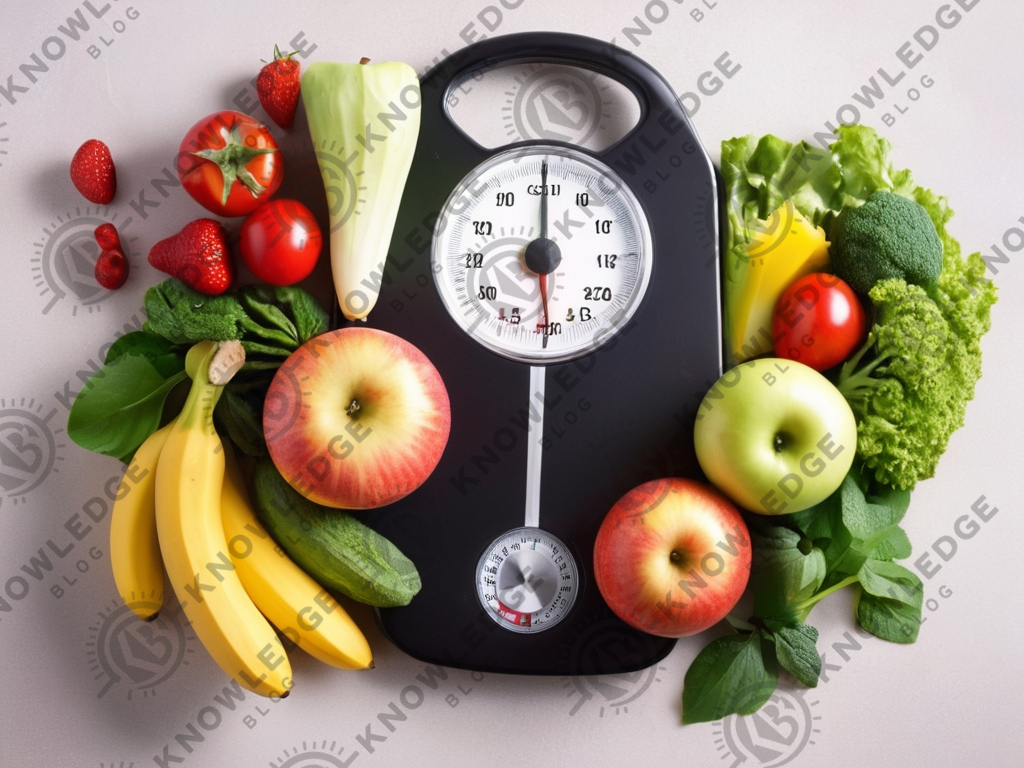How to make healthy weight loss plan

Embarking on a healthy weight loss plan is a positive step towards improving one’s health, increasing energy levels, and enhancing overall quality of life.
This guide aims to outline the fundamental components of an effective and healthy weight loss plan, providing practical strategies to help you achieve and maintain your weight loss goals responsibly and efficiently.
Table of Contents
ToggleUnderstanding Weight Loss
Understanding the fundamentals of weight loss is crucial for setting realistic goals and adopting effective strategies.
Here’s a detailed look at what you need to know about weight loss:
Basic Concepts of Weight Loss
- Energy Balance: Effective weight loss involves consuming fewer calories than you expend.
- Caloric Deficit: Achieve this either by reducing calorie intake, increasing physical activity, or both.
- Sustainability: Opt for gradual, sustainable changes rather than short-term Diet for Weight Loss.
Role of Metabolism
- Definition: Metabolism is how your body converts food into energy, including basic life functions.
- Factors Influencing Metabolism: Includes age, muscle mass, body size, and activity levels.
Importance of Muscle Mass
- Muscle vs. Fat: Muscles are metabolically active and burn more calories than fat.
- Strength Training: Builds muscle mass, potentially increasing metabolic rate and aiding weight control.
Hormonal Influence on Weight
- Appetite Hormones: Ghrelin and leptin regulate appetite and play roles in body weight.
- Thyroid Function: Affects metabolism; underactive thyroid can lead to weight gain.
How to make healthy weight loss plan
Creating a healthy weight loss plan involves more than just deciding to eat less and move more. It requires careful planning and thoughtful consideration of your individual needs and lifestyle.
Setting Realistic Goals
setting realistic goals is important step of making healthy weight loss plan.
Steps to Set Realistic Goals
- Evaluate Your Starting Point
- Begin by assessing your current health status, which might include factors like weight, body fat percentage, and overall fitness level.
- Consult with healthcare providers if needed, to understand any medical limitations or considerations.
- Learn About Healthy Weight Loss
- Research to understand what a healthy weight loss rate looks like.
- Set Specific and Measurable Goals
- Instead of vague goals like “lose weight,” specify how much weight you want to lose and in what timeframe.
- Include fitness goals, such as being able to run a 5k or achieving a certain number of steps per day.
- Make Goals Achievable and Relevant
- Ensure the goals are realistic given your current lifestyle. For instance, if you have a busy schedule, planning for shorter, more frequent workouts might be more practical than fewer, longer sessions.
- Align your goals with your personal values and interests to increase motivation. If you enjoy the outdoors, include hiking or cycling in your fitness targets.
- Time-Bound Goals
- Set deadlines for your goals to provide structure and urgency. For example, “I will lose 5 pounds in the next 5 weeks.”
- Having a timeline helps you organize your efforts and measure your progress effectively.

Make Effective Exercise Strategies
making effective exercise strategies is first step of making healthy weight loss plan.
Steps to Make Effective Exercise Strategies
- Assess Your Fitness Level
- Start by evaluating your current physical condition. If you haven’t exercised in a while, you may need to start slowly.
- Consider any health issues or limitations that might affect the type of exercises you can perform.
- Set Exercise Goals
- Make your exercise goals specific, measurable, and time-bound, such as “I will walk 30 minutes per day, five days a week.”
- Ensure your goals challenge you without being overwhelming.
- Choose Exercises You Enjoy
- Incorporate activities that you enjoy to ensure you will stick with them. If you dislike running, consider swimming, cycling, or dancing instead.
- Enjoyment is key to consistency, which is crucial for effective weight loss.
- Incorporate Variety
- To work different muscle groups and prevent boredom, mix different types of exercises. Include a combination of cardiovascular exercises, strength training, and flexibility workouts.
- Change your routine every few weeks to keep your body guessing and improving.
- Plan a Weekly Schedule
- Create a weekly exercise plan that outlines what activities you will do on each day. A well-structured plan helps you manage your time and balance exercise with other responsibilities.
- Be realistic about how much time you can dedicate to exercise each week.
- Use Technology and Tools
- Utilize fitness trackers, apps, or a simple journal to track your progress and stay motivated.
- Tools like heart rate monitors can help you ensure that you are exercising at the correct intensity for maximum fat loss.
Related Article: How to Keep Your Weight the Same: Finding Your Balance
Meal Planning and Preparation
Meal planning and preparation are integral components of any successful healthy weight loss plan.
Here are some steps to help you effectively plan and prepare your meals:
Steps to Effective Meal Planning and Preparation
- Assess Your Dietary Needs
- Consider your calorie needs based on your weight loss goals and activity level. Use tools like the Harris-Benedict Equation to estimate your daily calorie needs.
- Account for dietary restrictions or preferences such as vegetarian, vegan, low-carb, or gluten-free.
- Create a Meal Plan
- Plan for All Meals: Include breakfast, lunch, dinner, and healthy snacks. Planning all meals can prevent unplanned calorie intake.
- Balance Macronutrients: Ensure each meal has a good balance of proteins, fats, and carbohydrates. Include plenty of fiber and micronutrient-rich foods like fruits and vegetables.
- Variety: To prevent boredom and nutritional deficiencies, incorporate a variety of different foods each week.
- Schedule Your Cooking and Shopping
- Make a Shopping List: Based on your meal plan, create a shopping list to avoid buying unnecessary items.
- Set a Shopping Schedule: Stick to a regular shopping schedule to maintain a consistent meal routine.
- Batch Cooking: Choose a day to prepare and cook meals in bulk, which can save time during the week.
- Prepare and Store Meals
- Cook in Bulk: Prepare large quantities of staple dishes that can be eaten across several meals, such as grains, proteins, or soups.
- Use Proper Storage: Invest in good quality containers to store meals in the fridge or freezer.
- Organize Your Kitchen: Keep your workspace clear and your pantry organized to make cooking and meal assembly quick and easy.
- Make Adjustments as Needed
- Monitor Your Progress: If you’re not seeing the desired weight loss, reassess your meal plans and portion sizes.
- Adjust for Preferences and Feedback: Adapt your meal plan based on what meals you enjoyed most and which were most satisfying.
- Stay Flexible
- While a structured healthy weight loss plan is helpful, be flexible enough to accommodate unexpected changes like social events or changes in your routine.
- Have backup plans for when you can’t cook, such as healthy frozen meals or quick recipes that don’t require much preparation.
Related Article: The Guide to Choosing the Best Weight Loss Food Program
Example of healthy weight loss plan
- Setting Realistic Goals
- Weight Loss Goal: Aim to lose 15 pounds over the next 15 weeks, targeting a healthy loss of 1 pound per week.
- Fitness Goal: Include being able to complete a 5k run without stopping by the end of the 15 weeks.
- Effective Exercise Strategies
- Exercise Routine: Plan to exercise 5 days a week, incorporating:
- Cardiovascular Workouts: 30 minutes of brisk walking or jogging on Monday, Wednesday, and Friday.
- Strength Training: Bodyweight exercises like push-ups, sit-ups, and squats on Tuesday and Thursday.
- Flexibility and Balance: Dedicate 10 minutes to stretching or yoga at the end of each workout session.
- Meal Planning and Preparation
- Weekly Meal Plan:
- Breakfast: Oatmeal with fresh berries and a teaspoon of honey; green smoothie with spinach, banana, and almond milk.
- Lunch: Grilled chicken or tofu salad with mixed greens, cherry tomatoes, cucumbers, and a vinaigrette dressing; quinoa and vegetable stir-fry.
- Dinner: Baked salmon or chickpea patties, sweet potato, and steamed broccoli; lentil soup with a side of whole-grain bread.
- Snacks: Almonds, Greek yogurt, or sliced apples with peanut butter.
this Example of healthy weight loss plan can help make your own healthy weight loss plan.
Conclusion
In conclusion, a healthy weight loss plan involves a comprehensive approach that combines setting realistic goals, establishing effective exercise routines, meticulous meal planning and preparation, and leveraging additional resources for ongoing support and education.
By focusing on gradual, sustainable changes and balancing nutrition and physical activity, individuals can achieve their weight loss objectives while enhancing their overall health and well-being.
By following a well-structured healthy weight loss plan like the one outlined above, you can lay a solid foundation for long-term success in maintaining a healthy weight and lifestyle.






